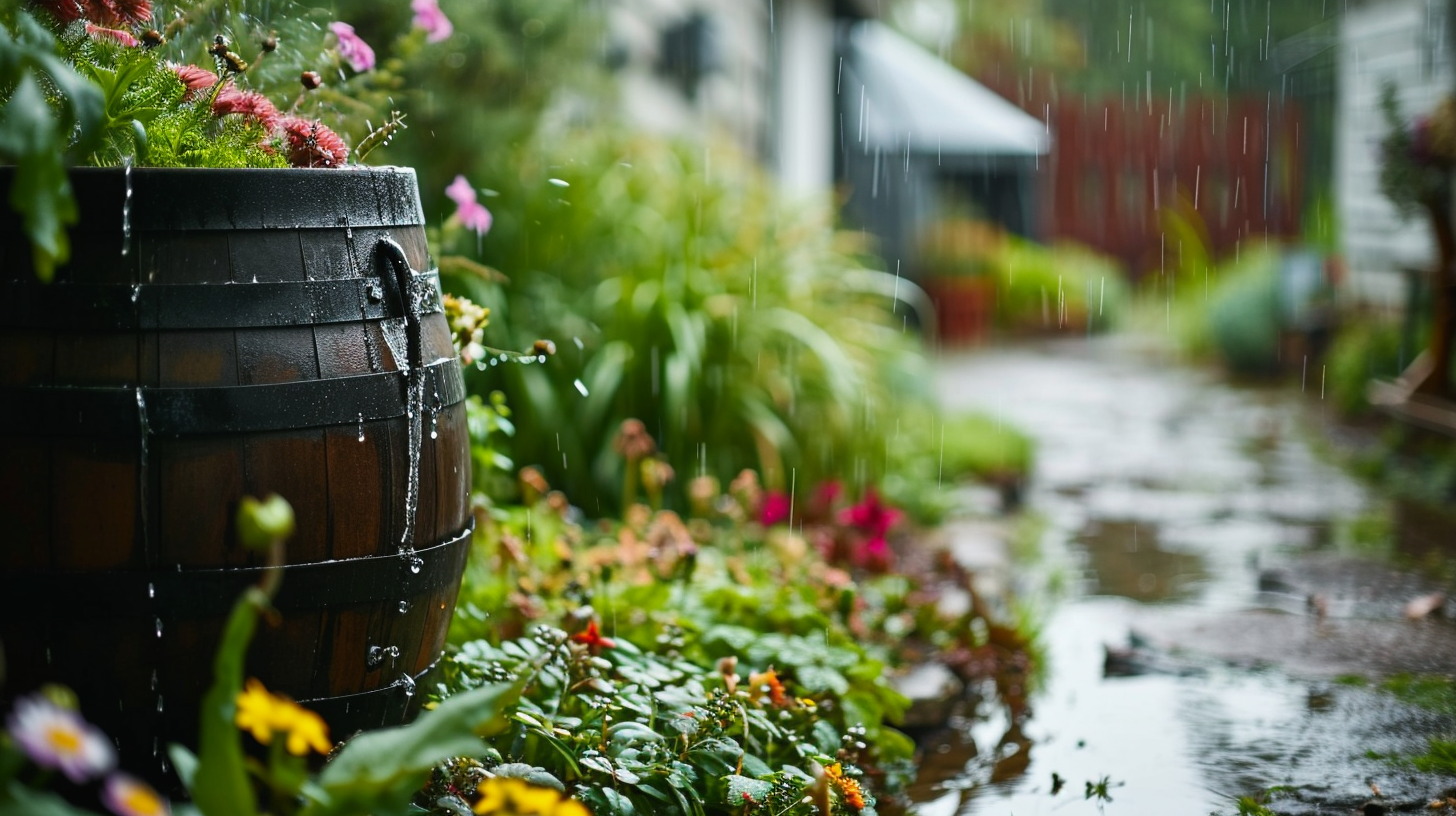In this concise and informative article, we will guide you through the step-by-step process of installing a rain barrel. By harnessing the power of rainfall, you can conserve water and reduce your environmental impact. We will cover everything from choosing the ideal location and gathering the necessary tools, to preparing your downspout and securing the rain barrel. Additionally, we will provide tips on maintaining and utilizing your rain barrel system effectively. Get ready to make a positive and sustainable change in your home or garden.
Choosing the Right Location for Your Rain Barrel
When considering the installation of a rain barrel, it is crucial to carefully select the appropriate location for optimal rainwater collection and conservation. One of the first factors to consider is choosing the right size rain barrel to fit your needs. The size of the rain barrel will depend on the amount of rainfall in your area and the amount of water you plan to use for various purposes such as watering plants or washing cars. Additionally, it is important to consider the benefits of using a rain barrel. Rainwater is free and abundant, and using it for irrigation can help reduce water bills and conserve water resources. By placing the rain barrel in a location that receives direct rainfall, such as under a downspout or near a gutter, you can maximize the amount of water collected and make the most of this sustainable water source.
Gathering the Necessary Tools and Materials
To ensure a smooth installation process, gather all the necessary tools and materials, such as a rain barrel, downspout diverter, hose, and level, before starting the project. Installing a rain barrel is a great way to collect rainwater for various purposes, such as watering plants and gardens. By collecting rainwater, you can reduce your reliance on municipal water sources and contribute to water conservation efforts. To begin the installation process, make sure you have a rain barrel that is suitable for your needs and the space available. Additionally, you will need a downspout diverter to redirect the water from the downspout into the rain barrel. A hose can be used to connect the rain barrel to your garden or other areas where you will be using the collected rainwater. Lastly, a level will help ensure that the rain barrel is positioned correctly for optimal water collection. By gathering these tools and materials beforehand, you can ensure a successful rain barrel installation and maximize the benefits of rainwater collection.
Preparing Your Downspout for Rain Barrel Installation
Before beginning the installation process, it is important to carefully assess and reinforce the stability of your downspout, as its structural integrity will greatly impact the effectiveness of your rain barrel installation. Start by inspecting the downspout for any signs of damage or weakness. Look for cracks, leaks, or loose connections that may compromise its stability. If any issues are found, consider making necessary repairs or replacements before proceeding further. Additionally, evaluate the compatibility of your downspout with the rain barrel system you plan to install. Some modifications may be required to ensure a proper fit and efficient water flow. It is crucial to ensure that the downspout can effectively divert water into the rain barrel without any obstructions or leaks. Taking these steps will help guarantee a successful rain barrel installation and maximize its benefits for water conservation.
Installing and Securing Your Rain Barrel
Properly anchoring your rain barrel with sturdy brackets is essential to ensure its stability and prevent any potential hazards or damage. When installing a rain barrel, it is important to secure it properly to avoid accidents or damage to surrounding structures. One of the main benefits of rainwater harvesting is that it allows you to collect and store rainwater for various uses, such as watering plants and gardens, washing cars, or even flushing toilets. However, without proper anchoring, a rain barrel can become a safety hazard if it tips over or gets knocked down. By using sturdy brackets, you can securely attach the rain barrel to a wall or post, providing stability and peace of mind. This ensures that the rain barrel remains in place, even during heavy rain or strong winds, maximizing its effectiveness and longevity.
Maintaining and Using Your Rain Barrel System
Regularly inspecting and cleaning your rain barrel system is crucial to ensure its optimal functionality and prevent any potential blockages or contamination. Rain barrel maintenance plays a vital role in maximizing water usage and promoting sustainable practices. The first step in maintaining your rain barrel system is to inspect it regularly for any signs of damage or wear. Check for leaks, cracks, or loose fittings, and repair or replace them as needed. Additionally, it is important to clean the barrel periodically to remove any debris or sediment that may accumulate over time. This can be done by rinsing the barrel with a hose or using a brush to scrub the interior. By taking these simple steps, you can ensure that your rain barrel system continues to provide a reliable source of water while minimizing any potential issues.




